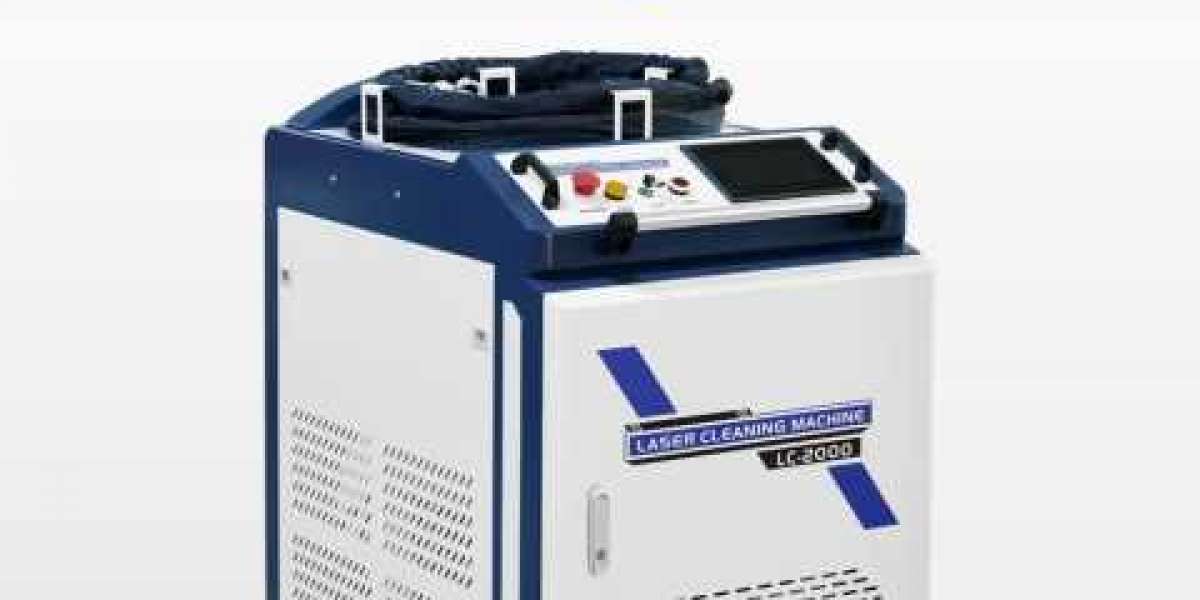In recent years, laser cleaning machines have emerged as a groundbreaking technology revolutionizing surface cleaning across various industries. Offering unparalleled precision, efficiency, and environmental friendliness, these machines have become indispensable tools in applications ranging from industrial manufacturing to conservation and restoration. This guide aims to provide a comprehensive overview of laser cleaning machine, including their principles, applications, advantages, and considerations for implementation.
What is a Laser Cleaning Machine? Laser cleaning machines utilize the power of laser beams to remove contaminants, coatings, rust, oxides, and other unwanted substances from surfaces. Unlike traditional methods such as abrasive blasting or chemical cleaning, laser cleaning is non-contact, non-abrasive, and does not involve the use of harsh chemicals, making it an environmentally friendly and highly precise solution.
How Does it Work? The process of laser cleaning involves focusing a high-intensity laser beam onto the surface to be cleaned. The energy from the laser rapidly heats and vaporizes the contaminants or unwanted substances, causing them to detach from the surface. The resulting debris is then either vacuumed away or can be easily brushed off, leaving behind a clean and pristine surface. The entire process is controlled with precision using advanced software, allowing for customization of parameters such as power, pulse duration, and spot size.
Applications: Laser cleaning machines find applications across a wide range of industries and sectors. In manufacturing, they are used for cleaning metal surfaces prior to welding, painting, or coating, ensuring optimal adhesion and surface quality. In automotive and aerospace industries, laser cleaning is employed for removing coatings, corrosion, and residues from engine components, molds, and tooling. In cultural heritage conservation, laser cleaning helps restore delicate artifacts, sculptures, and historical buildings without causing damage to the original material. Additionally, laser cleaning is utilized in electronics manufacturing, semiconductor production, and even in medical device manufacturing for precision cleaning of critical components.
Advantages:
- Precision: Laser cleaning offers unmatched precision, allowing for selective removal of contaminants without damaging the underlying substrate.
- Environmentally Friendly: Unlike traditional cleaning methods that often involve the use of chemicals or abrasive materials, laser cleaning is a clean and eco-friendly process that generates minimal waste.
- Versatility: Laser cleaning machines can be used on a wide range of materials, including metals, plastics, ceramics, and composites, making them highly versatile in various applications.
- Cost-Effective: While the initial investment in a laser cleaning machine may be higher compared to traditional methods, the long-term cost savings due to reduced consumables, labor, and downtime make it a cost-effective solution in the long run.
- Safety: Laser cleaning eliminates the need for manual scraping, blasting, or chemical handling, reducing the risk of operator exposure to hazardous materials and improving workplace safety.
Considerations for Implementation: Before implementing a laser cleaning solution, there are several factors to consider:
- Material Compatibility: Ensure that the material to be cleaned is compatible with laser cleaning to avoid any unintended damage.
- Safety Precautions: Proper safety measures should be in place to protect operators from exposure to laser beams and potential hazards associated with cleaning operations.
- Regulatory Compliance: Depending on the industry and application, compliance with safety regulations and standards may be required.
- Training and Expertise: Proper training and expertise are essential for operating laser cleaning machine effectively and safely.
Conclusion: Laser cleaning machines represent a cutting-edge solution for surface cleaning and preparation, offering unparalleled precision, efficiency, and environmental benefits. From industrial manufacturing to cultural heritage conservation, the versatility and effectiveness of laser cleaning make it a transformative technology in various fields. By understanding the principles, applications, advantages, and considerations for implementation, organizations can harness the full potential of laser cleaning to achieve superior cleaning results and drive innovation in their respective industries.








